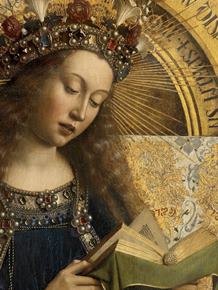Interpreting Northern Renaissance Art
Overview
This module investigates the methodologies used to interpret northern European Renaissance art, focusing on the art of Germany and the Low Countries in the 15th and 16th centuries. It will address how art-historical approaches have changed from the foundations of the discipline in the 19th century to the forms of interpretation most widely used today, including such topics as attribution, formal analysis, iconography, patronage, technical analysis, gender studies and cultural history. We will examine some of the most recent work interpreting northern Renaissance art in new ways, and we will also investigate some other approaches that have not been applied to this particular field of art history. How might the northern Renaissance field benefit from ideas developed in other areas of art history, or other disciplines? Are there new kinds of questions and answers waiting to be developed?

Module information
- Module title
Interpreting Northern Renaissance Art- Module number
HOA00059M- Convenor
Nicola Sinclair
For postgraduates
